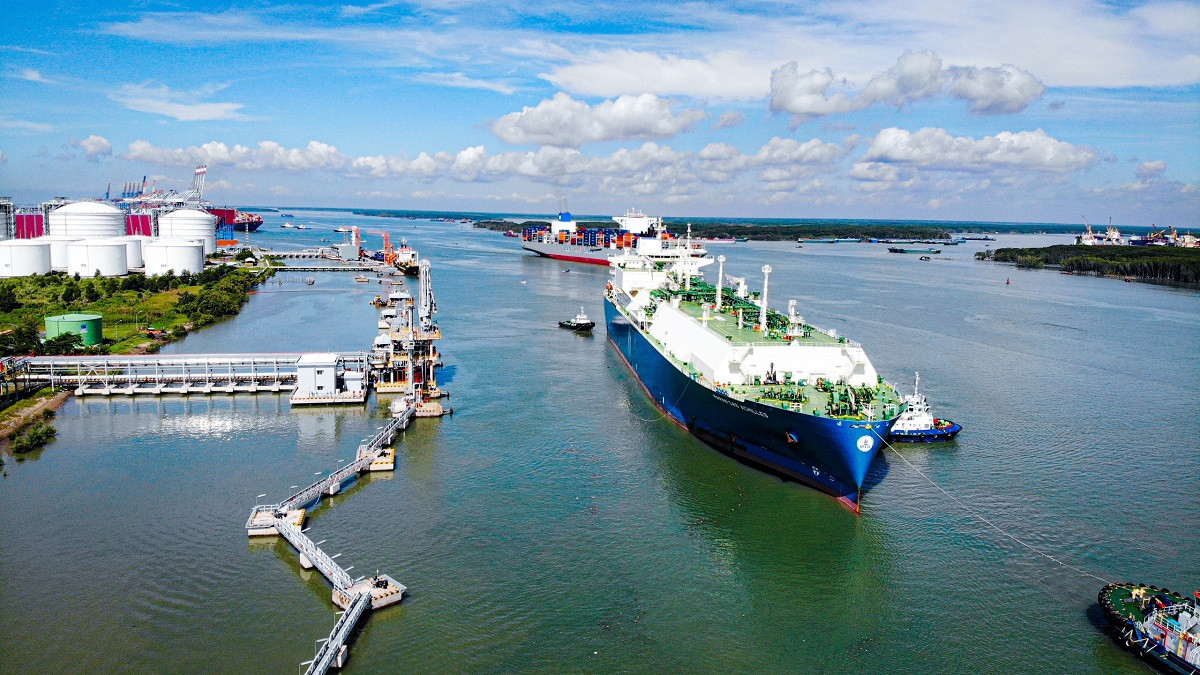
LNG is a kind of natural gas which has been converted from gas to liquid form by reducing temperature to -2600F or -1600C for ease and safe storage and transport. When it burns, it produces a volume of CO2 emissions 40 percent lower than coal and 30 percent lower than petroleum products.
“Using LNG is not only a potential environmental solution which effectively replaces traditional energy sources, but also becomes an important factor during the energy transition,” said Dr. Nguyen Huu Luong from the Vietnam Oil and Gas Institute.
Most people believe that energy transition is a process of converting from traditional fossil fuel to cleaner energy such as renewables like wind and solar power. This, according to Luong, is true but not sufficient.
In fact, energy transition is a process of using energy in a more effective and cleaner way.
The most practical way of using LNG at this time is generating electricity in gas- and LNG-fired plants (40 percent of LNG demand in the world). The volume of carbon emissions from the plant is just half of that from coal-fired plants.
In addition, LNG is used as fuel in chemical and petrochemistry production industries, and in steel, cement and porcelain product manufacturing (used to burn materials).
In the transportation sector, LNG can replace diesel (DO) and mazut (FO) to be used as fuel for heavy trucks or vessels in order to reduce carbon emissions.
LNG also can be used for civil and commercial purposes. LNG is a fuel that provides heating and cooking heat for households and buildings.
Experts believe that global LNG reserves are big enough to satisfy the long-term demand of mankind, while Asia and the Pacific will be the places to witness breakthroughs in developing LNG-fired power plants in the 2021-2030 period.
According to Luong, the Middle East and Russia are zones with large reserves, while the reserves in Europe are low. In Asia, China, Japan and South Korea have the highest import demand in the region.
Vietnam joins the ‘LNG game’
Importing and consuming LNG is Vietnam’s priority for now after committing to net zero emissions by 2050, together with 147 other countries. It is also one of 48 countries that are members of Global Declaration on the transition of coal power to clean energy.
In July 2023, an oil tanker carrying 70,000 tons of LNG docked at Cai Mep – Thi Vai Port in Ba Ria – Vung Tau developed by PV Gas, a turning point for Vietnam’s energy sector.
PV Gas is the first company in Vietnam to obtain the Ministry of Industry and Trade’s (MOIT) certificate on meeting requirements for importing-exporting LNG. To date, at least two large international corporations have shown willingness for cooperation with Vietnam – Novatek and ExxonMobil.
After four years, PV Gas has completed the first LNG work, the largest and most modern in Vietnam – LNG 1 MMTPA Thi Vai with a 180,000 sq m tank and two regasification clusters with capacity of 171 tons per hour at maximum.
The Vietnamese company has been implementing its strategic plan on developing warehouses, including LNG 1 MMTPA Thi Vai, LNG Son My and LNG warehouse in the north. The LNG warehouse chain is expected to help PV Gas prove its capability and serve as leverage to help Vietnam position itself in regional and the world markets.
Under the national eighth national power development plan in 2021-2030 (Plan 8), the thermos power from regasification LNG would account for 14.9 percent of total national electricity capacity by 2030. The thermal power plants using LNG will be developed continuously in the 2025-2030 period. It is expected that by 2030, Vietnam would have 13 LNG-fired plants with total capacity of 22,400MW.
To date, all the 13 above mentioned LNG-fired power projects have received approval for investment. Of these, five projects are under execution and four projects have found investors, while local authorities are seeking investors for the remaining four.
Spunik has commented that Vietnam is now a potential market for international LNG suppliers. Luong estimated that in 2030-2050, about 50-60 percent of LNG will be imported.
In the immediate time, Vietnam may import LNG from the US, Australia and Qatar, and may consider importing LNG from Russia and the Middle East, to ensure sufficient supply for domestic demand.
Binh Minh